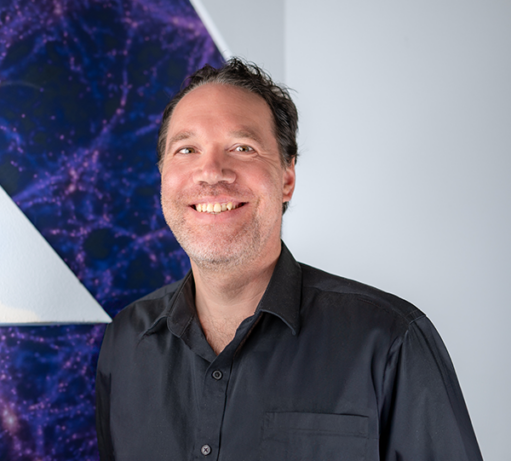In de afgelopen decennia zijn er duizenden planeten ontdekt buiten ons zonnestelsel, exoplaneten genaamd. Astronomen schatten dat de meeste sterren één en vaak meerdere planeten herbergen. De Melkweg alleen al heeft honderden miljarden sterren. Reken maar uit. De ontdekkingen van exoplaneten hebben aangetoond dat de klassieke architectuur van ons zonnestelsel niet standaard is; er is een rijke verscheidenheid aan systemen ontdekt. Zo zijn er bijvoorbeeld reuzenplaneten die in slechts enkele dagen een baan om hun gastheerster voltooien of planetenstelsels met veel dicht opeengepakte rotsachtige planeten. Ook zijn er nieuwe klassen planeten ontdekt: de zogenaamde Superaardes en Sub-Neptunes.
We staan nu voor de taak om deze rijkdom aan planetaire diversiteit te verklaren. Bovendien heeft de ontdekking dat planetenstelsels zo veel voorkomen de vraag of er ergens anders in het heelal leven kan bestaan intrigerender gemaakt dan ooit tevoren. Het exoplaneetonderzoek van SRON richt zich op de karakterisering van het binnenste en de atmosferen van exoplaneten. Welke gassen kunnen we vinden? Wat zegt dit over de chemie in de atmosferen? We gebruiken de chemische eigenschappen van de atmosfeer als een probe voor de evolutionaire geschiedenis en het ontstaansmechanisme van de planeet.
We werken aan deze vragen door atmosferen en interieurs te modelleren, software te schrijven en gegevens van ruimtetelescopen te analyseren. We zijn ook betrokken bij de ontwikkeling van die telescopen, zoals PLATO en Ariel.
Welke planeten zijn er?
Tot halverwege de jaren negentig kenden we alleen de planeten binnen ons eigen zonnestelsel. Astronomen voorspelden al lang de aanwezigheid van exoplaneten en men verwachtte dat deze planetenstelsels op het onze zouden lijken, met kleine rotsachtige planeten dichter bij de ster en grote gasvormige werelden verder weg. Maar de ontdekking van 51 Peg b, een planeet die net zo groot is als Jupiter maar in een baan van drie dagen rond zijn ster draait, doorbrak dit beeld. Sindsdien hebben we bijna 6.000 exoplaneten ontdekt en ontdekt dat er een breed scala aan systeemarchitecturen bestaat. Geen van de ontdekte exoplaneetsystemen kan zelfs als vergelijkbaar met het onze worden beschouwd. In de toekomst kan dit veranderen. Zo zal de PLATO-missie van ESA, die in 2026 gelanceerd wordt, duizenden exoplaneten vinden en specifiek zoeken naar aardse analogen. SRON heeft de koude vacuümvalidatie en karakterisering van 11 van de 26 camera’s uitgevoerd en we zullen nauw betrokken zijn bij de analyse van PLATO-gegevens zodra deze gelanceerd is.
Hoe ontstaan planeten en hoe evolueren ze?
Planetenstelsels zijn dus divers. Maar waarom? Hoe zijn deze architecturen ontstaan? Na de vorming van een ster blijft er gas en stof over. Uit deze protoplanetaire schijf vormen zich planeten als deze stofkorrels botsen en samensmelten. Waar een planeet wordt gevormd, heeft invloed op het materiaal dat voor hem beschikbaar is: lichtere elementen worden uit de binnenschijf verdreven door stellaire bestraling en de thermische gradiënten in de schijf hebben invloed op de chemie. Dus laat het vormingsproces een chemisch spoor achter dat we kunnen volgen door de atmosferen van volledig gevormde exoplaneten te karakteriseren? Dat valt nog te bezien.
Een struikelblok is dat als de planeet eenmaal gevormd is, hij blijft veranderen. Hij kan bijvoorbeeld door de protoplanetaire schijf migreren, zijn baan veranderen en daarbij meer materiaal opnemen. De constante bestraling door de gastheerster kan ook gassen uit de atmosfeer verwijderen, vooral lichte gassen zoals waterstof en helium, waardoor de algehele samenstelling verandert. Het modelleren van deze foto-evaporatie helpt om het uiteindelijke lot van jonge planeten te begrijpen of om de oorspronkelijke staat van volwassen planeten te voorspellen, en zo meer inzicht te krijgen in de levenscyclus van planeten.
Om zelfs maar te proberen te begrijpen of het vormingsproces kan worden onthuld door exoplaneetatmosferen te bestuderen, moeten we dus grote, diverse populaties planeten bestuderen. Planeten van alle groottes en leeftijden, in verschillende banen rond verschillende soorten sterren. Met telescopen op de grond en ruimtemissies zoals Hubble en James Webb wordt hier al aan gewerkt. En in 2029 wordt de Ariel-missie van ESA gelanceerd met als doel duizend exosferen te karakteriseren. SRON is verantwoordelijk voor het bepalen van de exoplaneten die Ariel zou kunnen bestuderen. Daarnaast zijn wetenschappers van SRON en andere instituten in Nederland sterk betrokken bij de prestatiesimulatie en wetenschappelijke data-analyse voor de missie.
Zijn er mogelijk bewoonbare exoplaneten?
Het detecteren en karakteriseren van aardachtige planeten is een cruciale stap in het begrijpen van onze plaats in het heelal. Als we echter rotsachtige exoplaneten in de bewoonbare zone willen karakteriseren, zijn er nog belangrijke stappen te zetten in termen van technologische ontwikkeling. Bij SRON ontwikkelen we momenteel de belangrijkste technologieën die hiervoor nodig zijn, waarmee we de weg bereiden voor telescopen als de Extremely Large Telescope, Habitable Worlds Observatory en LIFE, die allemaal in staat zullen zijn om potentieel bewoonbare planeten te zoeken en te karakteriseren. In de komende decennia hopen we de vraag te kunnen beantwoorden die de mensheid zich al eeuwenlang stelt als hij naar de nachtelijke hemel staart: staart er iemand terug?




